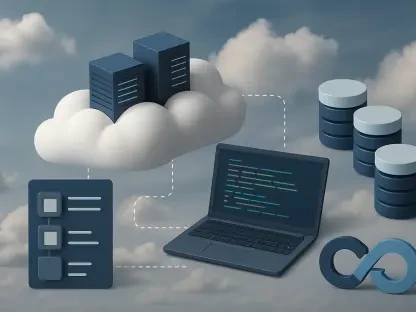Cloud as a platform has heralded a revolutionary change to the IT infrastructure for businesses across various domains, offering unparalleled scalability, flexibility, and cost-efficiency. The demand for cloud computing is still on the rise, and according to a recent report by Flexera, the global cloud computing market is expected to reach a staggering $1.3 trillion by 2025. This exponential growth underscores organizations’ reliance on the cloud to store data and power their operations. However, amid this reliance, ignoring the importance of data security would be foolhardy. Data loss prevention (DLP) emerges as a fundamental security measure that warrants significant focus and a well-established plan to mitigate any incidents of data loss through possible means.Organizations today face multiple data threats, including cyberattacks, malware, insider threats, phishing, and ransomware. In light of these risks, DLP becomes indispensable for any modern organization, particularly those hosting their IT infrastructure on the cloud. DLP helps mitigate security risks by reducing the chances of breaches and restricting unauthorized access, especially for endpoint devices. Beyond this, DLP strengthens information security by maintaining data integrity, confidentiality, and availability. Furthermore, it assists organizations in ensuring compliance with various data protection regulations as required by law. Let’s explore the detailed steps involved in an effective DLP strategy for businesses operating in the cloud computing era.
1. Identify and Classify Sensitive Information
The first step towards a robust DLP strategy is identifying and classifying sensitive data across your hybrid IT environment, including cloud platforms. Understanding what constitutes sensitive data is essential; this could range from personal customer information to financial records or proprietary business data. Data discovery tools can assist in scanning and identifying sensitive information scattered across different cloud-based and on-premises systems. Automatically classifying data according to its sensitivity level allows organizations to implement targeted safeguards effectively.In addition, classifying data also aids in prioritizing the data protection efforts. High-sensitivity information can be subjected to stricter security measures, while less critical data can be managed with standard protocols. Data classification should be an ongoing process, given the dynamic nature of data creation and usage within organizations. Employing automated classification tools that leverage artificial intelligence and machine learning can significantly enhance the accuracy and efficiency of this process. This systematic approach ensures that all sensitive data, whether at rest or in transit, is appropriately protected against potential threats.
2. Determine Data Retention Period
Once the sensitive data has been identified and classified, the next step is to ascertain the duration for which the data needs to be retained based on organizational requirements and prevailing regulations. Different types of data have varying retention needs; for instance, financial records may need to be retained longer due to regulatory requirements, while other types of data may only need short-term retention. Establishing a clear data retention policy ensures that your organization is not only in compliance but also optimizes storage costs and mitigates risks associated with keeping data longer than necessary.Data retention policies should be regularly reviewed and updated to align with any changes in regulatory requirements and business needs. This ensures that only relevant and necessary data is retained, while obsolete data is securely deleted. Implementing automated tools can facilitate efficient data retention and deletion processes, ensuring adherence to policies without relying on manual intervention. By determining appropriate data retention periods, organizations can reduce the risk of data breaches and enhance their overall data management practices.
3. Implement Various Safeguards
Securing your data involves implementing a variety of protections such as encryption, access limitations, and visual identifiers for sensitive information. Encryption plays a crucial role in protecting data both at rest and in transit, ensuring that only authorized individuals can decrypt and access the information. Access controls further restrict who can view or modify sensitive data, employing multifactor authentication and role-based access to tighten security further. Visual identifiers, such as watermarks, can also help in recognizing and managing sensitive documents.Incorporating additional safeguards like endpoint protection, intrusion detection systems, and secure data transmission protocols adds multiple layers of defense against potential threats. For organizations using cloud services, ensuring that the chosen Cloud Service Providers (CSPs) adhere to high-security standards and offer robust security features is essential. Regular audits and security assessments of these safeguards should also be conducted to identify and address any vulnerabilities proactively. Implementing diverse security measures creates a fortified environment that significantly reduces the risk of data loss or theft.
4. Educate Employees on Best Data Security Practices
Training your staff on top-notch practices to prevent, or at least reduce, accidental data exposure is paramount for effective DLP. Employees are often the first line of defense against data breaches, making it crucial for them to understand and adhere to best security practices. Regular training sessions should be conducted to educate employees about recognizing phishing attempts, handling sensitive data securely, and following proper procedures for data sharing and storage. This includes awareness about the risks associated with downloading unknown attachments, using weak passwords, and falling victim to social engineering tactics.Developing a culture of security within the organization can significantly enhance data protection efforts. Encouraging employees to report suspicious activities and providing them with straightforward resources for understanding complex security protocols can foster a proactive approach to data security. Additionally, incorporating data security awareness into the onboarding process for new employees ensures that everyone in the organization is equipped with the necessary knowledge to protect sensitive information effectively. Continuous education and reinforcement of best practices create a resilient workforce capable of mitigating data loss risks.
5. Establish Data Retention, Deletion, and Storage Procedures
Establishing data retention, deletion, and storage procedures is crucial in the growing cloud computing era. Organizations should have a clear understanding of regulatory requirements and business needs that dictate how long data should be retained and when it should be securely deleted. Implementing automated tools and processes to enforce data retention policies ensures that data is retained only for as long as necessary and that obsolete data is securely removed from the system.Regular review and updating of these procedures are essential to keep pace with changing regulations and organizational requirements. Ensuring that data storage systems are secure and adhere to best practices for data protection helps mitigate the risk of data loss. Employing strategies such as encryption, access controls, and continuous monitoring of data storage environments can provide additional layers of security.By following these steps, businesses can develop comprehensive data loss prevention strategies that protect sensitive information in the cloud computing era, ensuring compliance, reducing risks, and maintaining the trust of their customers and stakeholders.









